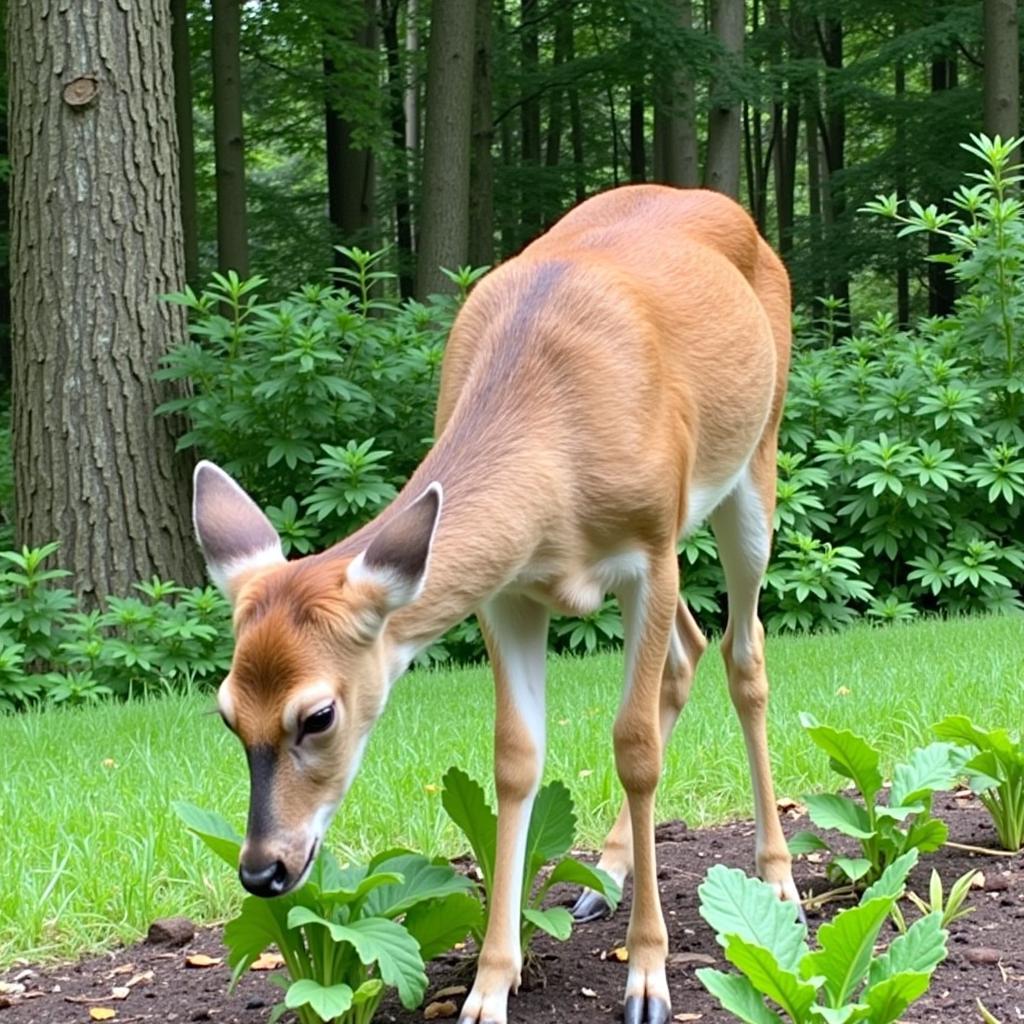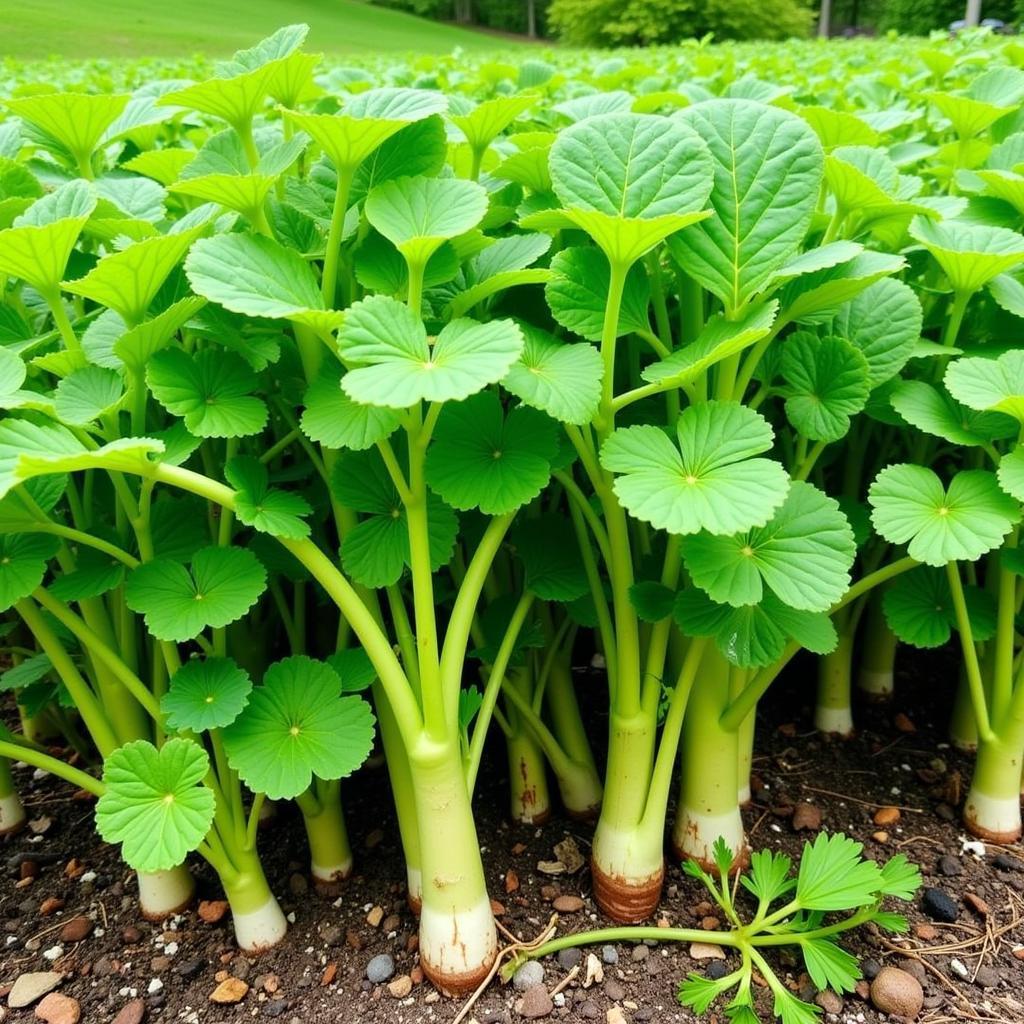Food Plot Radishes are a powerful tool for attracting deer to your property, providing a nutritious and appealing food source throughout the hunting season and beyond. These fast-growing, cool-season brassicas offer a bounty of leafy greens and a large, palatable taproot that deer find irresistible. Let’s explore how food plot radishes can enhance your hunting grounds.
After establishing your food plot, regular monitoring and maintenance are crucial for ensuring its continued success. More information on planting for deer and turkey can be found at best food plot for deer and turkey year round.
Why Choose Food Plot Radishes?
Food plot radishes, specifically varieties like daikon radish, offer several advantages for attracting deer:
- High Nutritional Value: Packed with vitamins and minerals, radishes provide essential nutrients that deer need, especially during the stressful winter months.
- Palatability: Deer relish both the leafy tops and the succulent taproot, making radishes a highly attractive food source.
- Fast Growth: Radishes establish quickly, providing a readily available food source within weeks of planting.
- Cold Tolerance: These cool-season brassicas thrive in colder temperatures, making them ideal for fall and winter food plots.
- Soil Improvement: Radishes help break up compacted soil with their deep taproots, improving soil aeration and drainage.
Selecting the Right Radish Variety
Choosing the right variety of radish for your food plot is crucial for success. Consider these popular options:
- Daikon Radish: Known for their large, elongated taproots, daikon radishes offer a substantial food source for deer. Learn more about daikon radish food plots at daikon radish food plot.
- Forage Radishes: These varieties are specifically bred for their high forage yield and attractiveness to deer.
- Oilseed Radishes: While primarily used as a cover crop, oilseed radishes can also attract deer with their leafy greens.
Planting and Maintaining Your Food Plot Radishes
Establishing a successful food plot requires proper planning and execution:
- Soil Preparation: Test your soil and amend it as needed to ensure optimal radish growth. You might consider exploring best food plot seed for poor soil for options suited to less fertile land.
- Planting Time: Plant radishes in late summer or early fall, allowing them to establish before the first frost.
- Planting Depth: Plant radish seeds about ½ to 1 inch deep.
- Fertilization: Follow recommended fertilization guidelines based on your soil test results.
- Weed Control: Manage weeds early to minimize competition with your radishes.
When Do Deer Eat Food Plot Radishes?
Deer will begin browsing the leafy greens of food plot radishes soon after they emerge. They will continue to feed on the tops throughout the fall and winter. As the weather gets colder and the ground freezes, deer will dig up the taproots, providing a valuable food source when other forage is scarce. Learn more about providing food for deer in colder weather at winter food plots for deer.
Tips for Success
- Plant in a sunny location: Radishes need ample sunlight to thrive.
- Provide adequate moisture: Water regularly during dry periods, especially during establishment.
- Consider a mixed planting: Combine radishes with other attractive forages like clover or turnips for a more diverse food plot.
- Protect your plot from pests: Monitor for insect or disease damage and take appropriate action if necessary.
 Deer enjoying a food plot of radishes
Deer enjoying a food plot of radishes
Expert Insights
Dr. Sarah Miller, Wildlife Biologist: “Food plot radishes are an excellent choice for providing deer with high-quality forage, especially during the critical late season. Their nutritional value and palatability make them a highly attractive food source.”
John Davis, Experienced Hunter: “I’ve had great success attracting deer with food plot radishes. The deer seem to prefer them over other brassicas, and the large taproots keep them coming back even after the ground freezes.”
Food Plot Radishes: A Valuable Addition to Your Hunting Strategy
Food plot radishes are a valuable addition to any deer hunting strategy. Their nutritional value, palatability, and cold tolerance make them an ideal food source for attracting and holding deer on your property. By following the planting and maintenance tips outlined above, you can create a thriving food plot that will enhance your hunting success. For more specific information on deer food plot radishes, visit deer food plot radishes.
 A thriving food plot of radishes
A thriving food plot of radishes
FAQ
- What type of soil is best for food plot radishes? Well-drained soil with a pH of 6.0-7.0 is ideal.
- How much seed do I need per acre? Generally, 4-6 pounds per acre is recommended.
- When should I fertilize my food plot radishes? Fertilize at planting and again in mid-fall.
- Can I plant food plot radishes in the spring? While possible, fall planting is preferred for optimal growth.
- How can I protect my food plot from deer overbrowsing? Consider using fencing or repellents to protect young seedlings.
- What other plants can I combine with food plot radishes? Clover, turnips, and winter wheat are good companions.
- How deep should I plant the radish seeds? Plant seeds approximately ½ to 1 inch deep.
Contact Us
For assistance with your food plot needs, please contact us at Phone Number: 02437655121, Email: [email protected] or visit our address: 3PGH+8R9, ĐT70A, thôn Trung, Bắc Từ Liêm, Hà Nội, Việt Nam. We have a 24/7 customer service team.